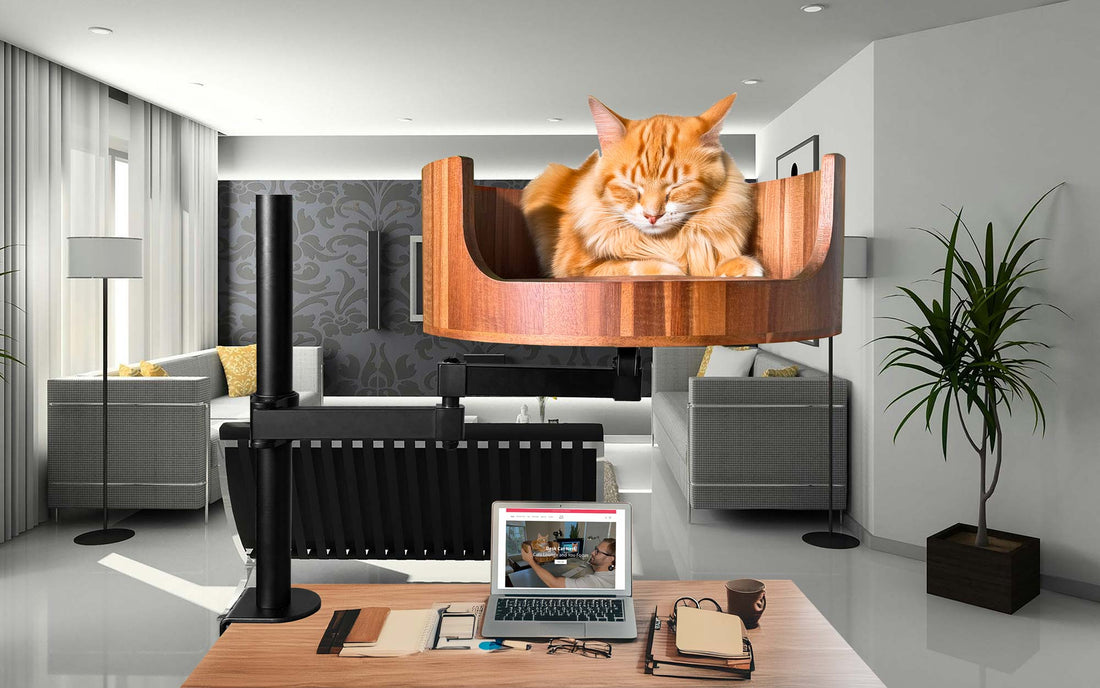
Why Do Cats Wag: Understanding Feline Behavior
Share
Have you ever wondered why cats wag their tails? Understanding feline behavior can provide insight into their unique communication styles and help foster a stronger bond between you and your furry friend. In this article, we will delve into the reasons behind why cats wag their tails, exploring the various meanings behind this common behavior.
From the playful flick of a tail during a game of chase to the rapid swish when they're feeling threatened, cats use their tails as a means of expressing their emotions and intentions. By observing your cat's tail movements, you can gain a better understanding of their mood and overall well-being. In addition to tail wagging, we will also discuss other feline behaviors such as purring, kneading, and grooming, uncovering the underlying reasons behind these actions. By decoding your cat's behavior, you can enhance your relationship with them and provide them with the care and attention they need to thrive.
1. Cats wag their tails as a form of communication, expressing a range of emotions from happiness to agitation.
2. Understanding the context in which a cat is wagging its tail is crucial for interpreting its message accurately.
3. The speed, height, and direction of a cat's tail movement can provide valuable insight into its current mood.
4. Tail wagging can also indicate a cat's level of excitement or arousal, helping owners understand their pet's needs and preferences.
5. By observing tail movements in conjunction with other feline behaviors, owners can better decode their cat's body language and strengthen their bond.
## Cat Communication: Understanding Tail Wagging
Cats use their tails as a form of communication, and tail wagging can convey various emotions and messages. While dogs typically wag their tails when they are happy or excited, the meaning behind a cat's tail wagging can be more complex. For example, a slow and gentle wag may indicate that the cat is feeling relaxed or content, while a rapid and aggressive wag could signal fear or aggression. It's essential to pay attention to other body language cues, such as ear position and vocalizations, to interpret what the cat is trying to communicate.
## Physiological Reasons for Tail Wagging
In addition to conveying emotions, cats also wag their tails for physiological reasons. One common reason for tail wagging is to maintain balance while walking or jumping. The tail acts as a counterbalance, helping the cat make precise movements and navigate its environment with ease. Cats may also wag their tails as a form of self-soothing behavior, similar to how humans may fidget when feeling anxious or stressed. By understanding the physiological reasons behind tail wagging, cat owners can better interpret their pets' behavior and provide appropriate care and support.
## Tail Wagging and Social Interactions
Tail wagging can play a crucial role in social interactions between cats and other animals, as well as between cats and humans. When a cat wags its tail during play or interaction with another cat, it can indicate excitement and enthusiasm. However, it's essential to differentiate between playful tail wagging and aggressive tail lashing, as the latter can signal potential conflict or aggression. Similarly, when a cat wags its tail while interacting with humans, it may be seeking attention, affection, or simply expressing its mood. Understanding the nuances of tail wagging in social interactions can help strengthen the bond between cats and their owners.
Frequently Asked Questions
Why do cats wag their tails?
Cats wag their tails as a way to communicate their emotions. A slowly wagging tail can indicate that a cat is feeling curious or slightly agitated, while a rapidly wagging tail may signal that the cat is feeling angry or aggressive.
Can the Desk Cat Nest help with reducing tail wagging in cats?
The Desk Cat Nest provides a cozy and comfortable space for your cat to relax in, which can help reduce stress and anxiety levels in cats. By creating a calming environment, the Desk Cat Nest may help decrease instances of excessive tail wagging in cats.
Are there other ways to address tail wagging in cats?
In addition to providing a comfortable resting space like the Desk Cat Nest, you can also try engaging your cat in interactive play, providing plenty of mental and physical stimulation, and ensuring they have a balanced diet and regular exercise to keep them happy and healthy. Consulting with a veterinarian may also help identify any underlying medical issues contributing to excessive tail wagging.
In conclusion, the Desk Cat Bed is the perfect solution for addressing the issue of why do cats wag. By providing a comfortable and secure space for your feline friend to relax and destress, this innovative product helps to create a calming environment that can reduce their urge to wag. With its durable and easy-to-clean design, the Desk Cat Bed offers both you and your cat a long-lasting and practical solution for promoting their overall well-being. Invest in a Desk Cat Bed today and give your cat the gift of a peaceful and contented life.



















































